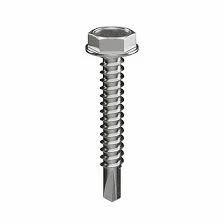Double-ended threaded stud with flat wrench design for versatile applications and easy installation
Understanding Double End Threaded Studs with Wrench Flats
In the realm of mechanical fastening, double end threaded studs with wrench flats play a pivotal role in ensuring robust and secure connections in various applications. These components are essentially cylindrical rods that feature threads on both ends, allowing for versatile fastening options in mechanical assemblies. The integration of wrench flats on the stud enhances its functionality, making it easier to tighten or loosen the nuts or components attached to it.
Design and Structure
Double end threaded studs are typically made from materials like stainless steel, carbon steel, or alloy steel, providing strength and durability. The threads on both ends can be either standard or metric, accommodating a wide range of nuts and fasteners. The addition of wrench flats—typically flat surfaces machined onto the body of the stud—allows for the use of a wrench or socket to grip the stud securely. This design feature is particularly advantageous in scenarios where space is limited, as it enables efficient torque application without the need for additional tools or configurations.
Applications
double end threaded stud with wrench flats

These studs are commonly used in various industries, including automotive, construction, and manufacturing. In automotive assemblies, for instance, they are found in engine components, transmission systems, and suspension systems, where they provide a solid fastening solution under high-stress conditions. In construction, double end threaded studs are used to anchor structures, support beams, and connect different materials, ensuring structural integrity. Their versatility also extends to plumbing and HVAC applications, where they help in securing piping and ductwork effectively.
Advantages
The advantages of using double end threaded studs with wrench flats are manifold. First and foremost, they simplify the assembly process. The ability to use a wrench directly on the stud means that installers can achieve the necessary torque without struggling to reach the ends of the stud. Additionally, the dual-thread design saves space and allows for more straightforward installations in tight quarters. Moreover, the reliability and strength of the connection are significantly enhanced, reducing the likelihood of loosening over time, especially in applications subject to vibration and dynamic loads.
Conclusion
In conclusion, double end threaded studs with wrench flats are invaluable components in modern engineering and construction. Their design facilitates efficient installation and maintenance while providing robust fastening solutions that are essential for the integrity and longevity of various systems. As industries continue to evolve and demand more from their components, these threaded studs will likely remain a staple, exemplifying the balance between innovative design and practical functionality. Whether in high-performance engines or foundational supports, their importance cannot be overstated.
-
Weatherproof Plastic Expansion Anchors for OutdoorNewsJun.06,2025
-
Sustainability in the Supply Chain: Eco-Friendly TEK Screws ProductionNewsJun.06,2025
-
Load-Bearing Capacity of External Insulation FixingsNewsJun.06,2025
-
Double Head Bolts: Enhancing Efficiency in Industrial MachineryNewsJun.06,2025
-
Corrosion Resistance in Chipboard Screws: Coatings for Wholesale DurabilityNewsJun.06,2025
-
Butterfly Toggle Bolts : Enhancing Structural ResilienceNewsJun.06,2025
